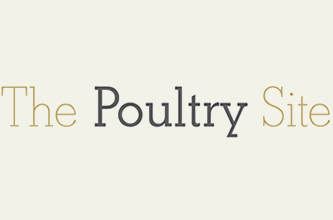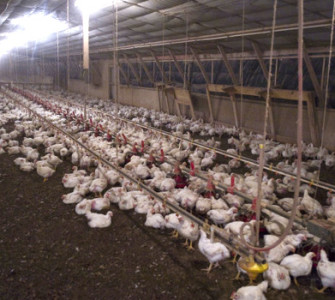New studies examine effects of lighting on chickens
Two recent studies show that broilers perform better under LED lighting than fluorescent lamps while layer behaviour is affected by light wavelength.
Broiler preferences for lighting explored in Brazilian studies
Vision is important in poultry behaviour and welfare. Poultry have highly specialised visual systems and the majority of their behaviour is mediated by vision, according to Angélica Signor Mendes from the Technological Federal University of Paraná in Brazil and co-authors there and at Purdue University in the US and Brazil’s State University of Campinas.
In a study1 published in Journal of Applied Poultry Research, they evaluated the lighting preference of broiler chickens exposed to different lighting sources and their production performance.
Overall, birds exposed to light-emitting diode (LED) lighting performed better that those reared under compact fluorescent lamps (CFL). Seven-day-old male broiler under LED lights had better feed efficiency than those of the same age under CFL.
In the first experiment, the researchers evaluated the preference of birds for white and yellow lighting provided by LED bulbs. Bird preference was assessed by videos recorded during the experiment. In a second experiment, they studied the performance of broiler chickens exposed to LED and CFL.
Performance was assessed in terms of mortality rate, bird bodyweight, daily bodyweight gain, feed consumption and feed conversion.
The chickens occupied environments with yellow and white LED lighting evenly and did not show any behavioural preference for one of the environments. However, birds ate more at 21, 28, and 35 days of age when exposed to white LED lighting.
Generally, Mendes and co-authors commented that birds exposed to LED lighting presented better production performance than birds under the CFL. Seven-day-old male chickens presented better feed conversion under LED illumination than did males of the same age under CFL.
Swiss study looks at different light colours for laying hens
Results of a trial in Switzerland2 revealed that laying hens under green light carried out more exploration and that red light made them less aggressive than white light. The study also confirmed previous work that red light accelerates sexual development but the effect was more due to wavelength than light intensity.
The best method for lighting poultry houses has been an issue for many decades, generating much interest as new systems become available, according to researchers at Bern University of Applied Sciences. Beat Huber-Eicher and colleagues explain in their paper in Poultry Science that poultry farmers are now increasingly using coloured LED to illuminate hen houses, for example, in Germany, Austria, the Netherlands and England). In Switzerland, they report, all new systems are now equipped with LED, usually green ones.
LED give monochromatic light from different wavelengths and have several advantages over conventional illuminants, including high energy efficiency, long life, high reliability and low maintenance costs.
They examined the effects of illumination with white, red and green LED on behaviour and production parameters of laying hens. Light intensities in the three treatments were adjusted to be perceived by hens as equal.
Twenty-four groups of 25 laying hens were kept in identical compartments (5.0×3.3 metres) equipped with a litter area, raised perches, feed and drinking facilities, and nest boxes. Initially, they were kept under white LED for a two-week adaptation period.
For the next four weeks, eight randomly chosen compartments were lit with red LED (640nm) and eight more with green LED (520nm). Behaviour was monitored during the last two weeks of the trial. Additionally weight gain, feed consumption, onset of lay and laying performance were recorded.
The results showed minor effects of green light on explorative behaviour while red light reduced aggressiveness compared with white light. The results confirmed previous research that red light accelerated sexual development of laying hens and this trial demonstrated that this effect was due to the specific wavelength and not the intensity of light, concluded Huber-Eicher and colleagues. They added, however, that an additional effect of light intensity should not be excluded.
References
1. Mendes A.S., S..J. Paixão, R. Restelatto, G.M. Morello, D.J. de Moura and J.C. Possenti. 2013. Performance and preference of broiler chickens exposed to different lighting sources. J. Appl. Poult. Res. 22(1):62-70. doi: 10.3382/japr.2012-00580
2. Huber-Eicher B., A. Suter and P. Spring-Stähli. 2013. Effects of colored light-emitting diode illumination on behavior and performance of laying hens. Poult. Sci. 92(4):869-873. doi: 10.3382/ps.2012-02679
May 2013
Article courtesy of thepoultrysite.com
Posted on May 17, 2014














